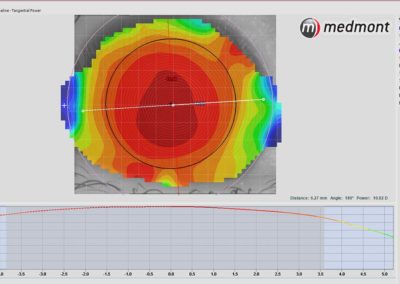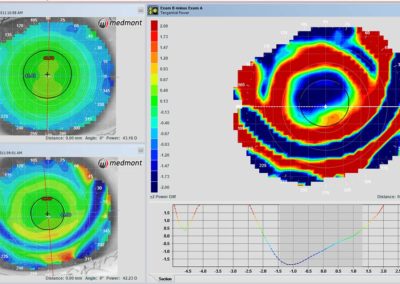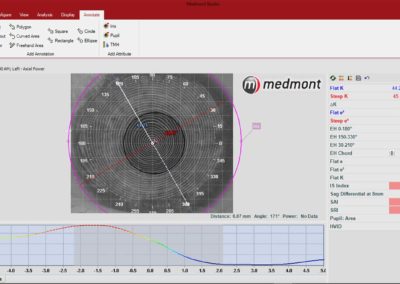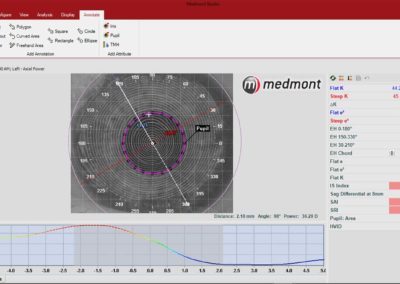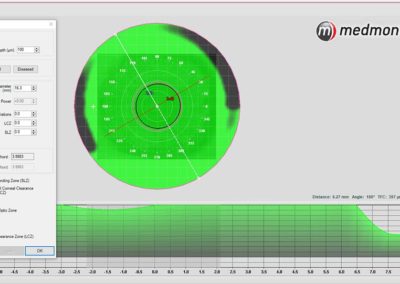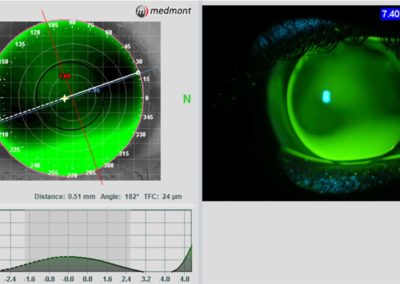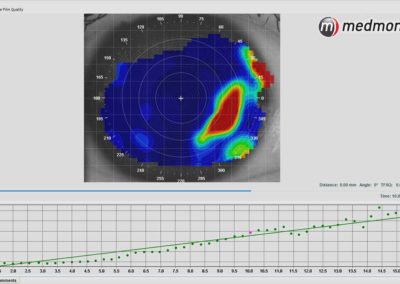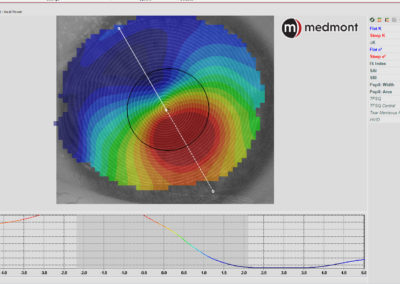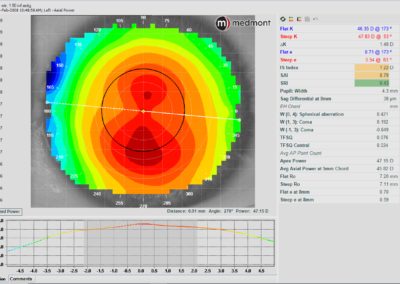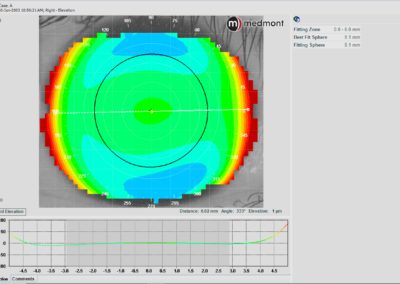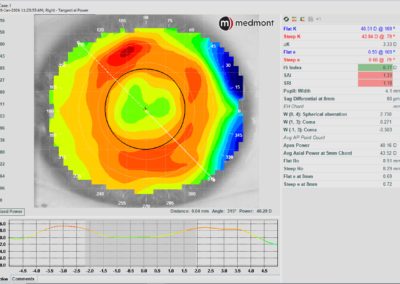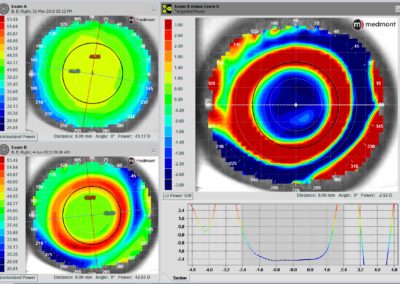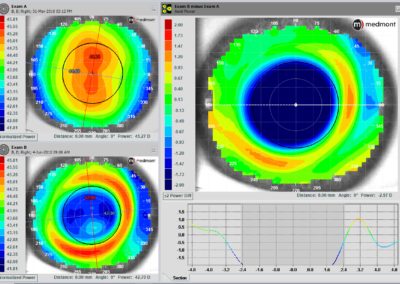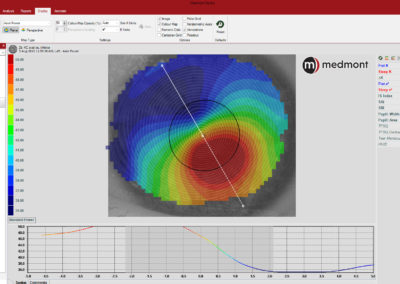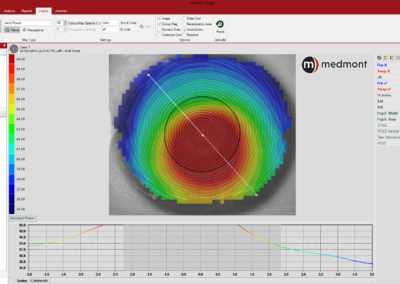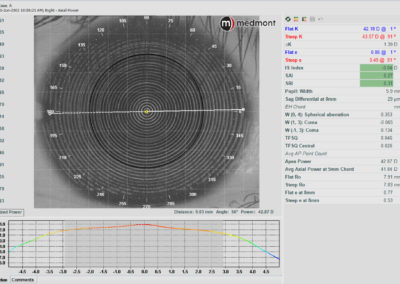E300 Corneal Topographer
Setting topography standards
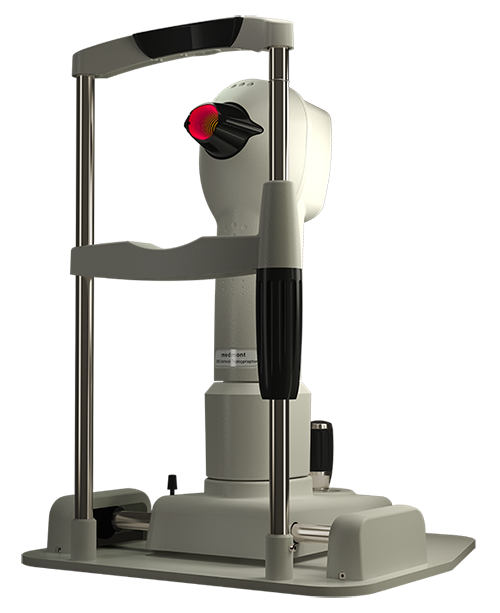
The topographer of choice
The Medmont E300 topographer is used extensively by top contact lens manufacture designers and consultants and the majority of optometry educational universities. It’s often used in clinical studies. The E300 has a reputation as the gold-standard for fitting specialty contact lenses. The others are measured against it.
Performance matters
The E300, with its small-cone placido disc design, allows for precise and actual captured data across the cornea. In contrast, large-cone placido disc systems are prone to data loss, which leads to guessing.

First-fit success
With the goal of first-fit success, the E300 optimises throughput and reduces rework with proven precision and repeatability. It focuses on precision to enable fast fit success.
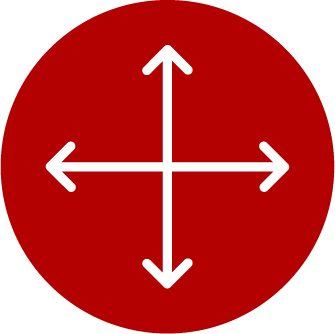
Don't guess
Designed to take guessing out of the equation with limbus-to-limbus corneal coverage and real data. This enables a more accurate baseline map (great for complex cases) for less rework and chair time and more satisfied patients.

Easy to use
The intuitive Medmont Studio software is made to be easy to learn and operate by everyone on your team. Topography maps are captured automatically in seconds and quality scored to give you confidence. Difficult surfaces become simple and patient comfort is optimised.
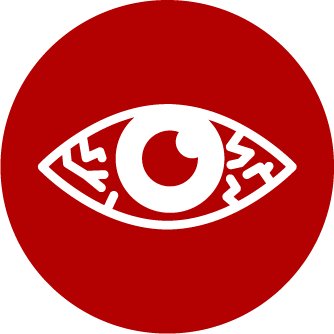
Non-invasive excellence
A study by the University of Melbourne determined the E300’s Auto TBUT dry eye analysis is repeatable, more sensitive and specific than fluorescein, and provides the user with a non-invasive measure of tear-breakup in line with DEWSII report recommendations.
Proven precision optics
For over 20 years, the E300 has supported practitioners with precision performance they can count on every day.
Use the 3D/360 product viewer below to explore the E300 with your mouse or touch.

Media Gallery
E300 features
Rapid and Precise Computer Aided Image Capture |
Superior Performance Through Advanced Image Analysis |
Precise Resolution Over Large Area of Coverage |
High Capacity Patient Database with Immediate Access to Stored Results Expand Coverage with “Composite Eye” Function |
Tear Film Surface Quality Analysis (Still Image & Video) |
Map Displays: • Tangential Curvature/Power |
Contact Lens Fitting: • Multicurve |
Shape Descriptors: • Astigmatism Measurement |
Global Indices: • SAI |
Regression Analysis: • Orthokeratology Subtractive Maps |
User Defined Attributes Microsoft Windows™ Based Software:: • Inter/Intra Network Compatible |
Pupil, Iris, HVID Measurement |
Specifications
Size
- Weight (Installed Assembly: 8.6kg
- Footprint: Width: 350mm Depth: 350mm / Height: 395mm +/- 15mm Stroke
- Shipping Dimensions / Weight: 48cm x 55cm x 53cm 16 kg (Box and Unit)
Electrical
- Power Requirements: 12V DC 500mA via USB Converter Box
Performance
- Coverage: Standard Capture: 0.25 –11mm
- TCC (Composite: Limbus to Limbus / Extrapolated Height Data Coverage: Limbus to 18mm
- Field of View: H11.5mm x V11mm
- Power Range: 10 –100 Diopters
- Number of Rings: 32
- Number of Data Points: 9600
- Optical Working Distance: 65mm
- Repeatability: Test Object < 0.1 Diopters
Computer Minimum Requirements
- PC and Mains Powered Peripherals: EN/IEC60950 Compliant
- Supported operating systems (OS’s):
- Windows 11 Professional and Home (64 bit) Professional.
- Windows 10 Professional and Home (64 and 32 bit) Professional (64 and 32 bit).
- Windows Server 2016, 2019 and 2022 (64-bit editions only).
- Windows Server “Server Core” installations are not supported.
- Processor: Intel™ i5 generation 6 or later
- Motherboard: Genuine Intel™ chipset highly recommended.
- Memory: 8 GB for non-video captures, 16 GB for video captures.
- Hard Disk Space: 40 GB for non-video, 200GB for video captures (More for larger databases or busy practices).
- Video cards: GPUs with dedicated memory of 2 Gig or more are recommended.
- Screen resolution: Recommended 1920 x 1080; Minimum supported: 1280 x 720
- USB: USB 2.0 Compliant port on the PC
Note: These specifications are subject to change without notification. © Medmont International PTY LTD
ALWAYS FOLLOW THE DIRECTIONS FOR USE
Brochure
Complete the form below to download the E300 brochure.
Request a free virtual demo

